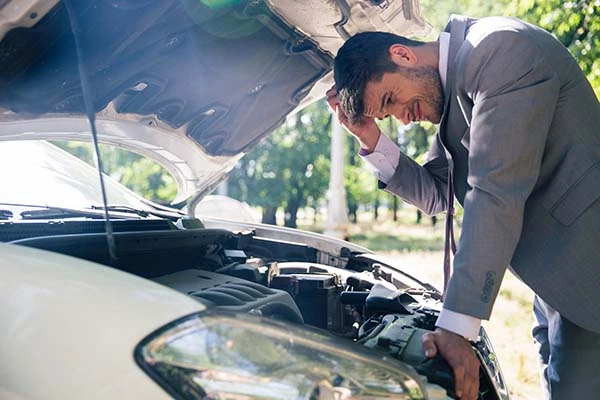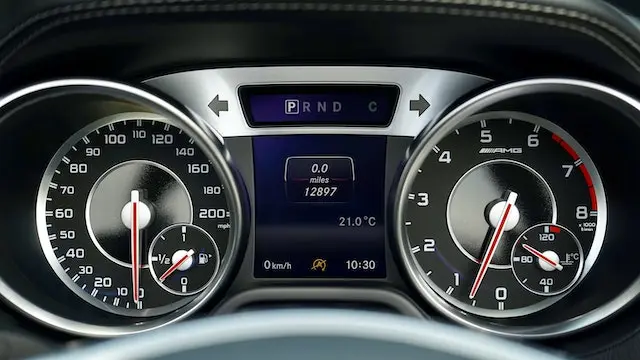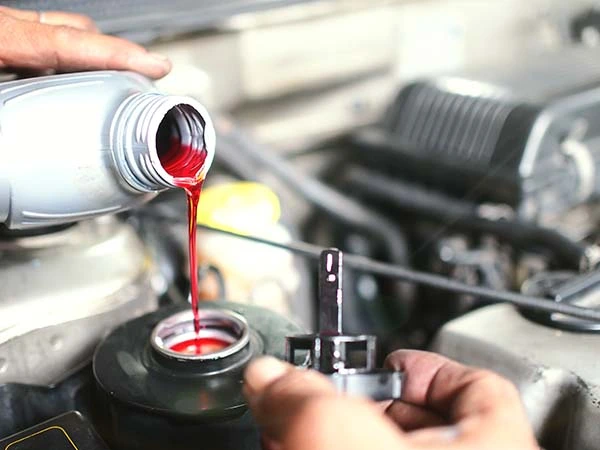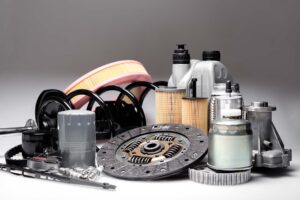Driving a car is fun, but the not-so-fun part is not being able to tell when something’s wrong. One car part that requires lots of attention is the thermostat, which has a long life but needs to be handled properly. Here’s how to tell if a car thermostat is bad and what to do about it.
Even if you have some of the best cars for off-road driving, they can occasionally get a faulty thermostat. They are made to last longer and improve, but this problem could happen to anyone. If you know about the issue, you’ll know the solutions, so you won’t have to worry about it again.
What Is a Car Thermostat?
A car thermostat is a device that helps regulate the temperature of a car’s engine. It does this by controlling the flow of coolant to the engine. This part is essential because it helps keep the engine running at a consistent temperature, which in turn helps it run more efficiently.
If your car’s thermostat isn’t working correctly, it can cause several problems. For example, getting stuck in the open position will allow too much coolant to flow into the engine. This can cause the engine to overheat, leading to severe engine damage.
While this issue isn’t as simple as cleaning your seatbelts with Chemical Guys products or taking the time to clean the steering wheel, it can be predicted and prevented. There are clear signs when your car thermostat is off, so it doesn’t need to be too late, like when we forget to add brake fluid on time.
Can You Drive a Car Without a Thermostat?
Driving without a thermostat is possible, but it can cause your engine to overheat, leading to big problems. Additionally, this can generally strain the cooling system and tamper with the car’s safety and driveability. So while you can technically drive without a thermostat, it’s not advisable.
How Long Does It Last?
Car experts recommend changing the thermostat every ten years. But, just like changing a flat tire, sometimes there’s an urgent need to replace this part, as well.
If your car was purchased new and you’ve never replaced the thermostat, look out for the ten-year mark and change it on time. If it’s older than ten years and you’ve never changed it, do it before your engine starts to get faulty; and if it’s an older and previously owned car, well, you should have some information about its thermostat from before. If unsure, see a mechanic just in case.

How to Tell if a Car Thermostat Is Bad
Replacing a car thermostat is like replacing the U-joints – you should do it when necessary, or it can heavily impact your car’s performance. Other things like putting the wrong gas in your car or taking the time to tune the carburetor are all significant factors in your vehicle’s health.
Taking care of these things on time will keep your vehicle healthy and safe longer than predicted. Of course, don’t let yourself get duped by some mechanics; they could accidentally disable your GPS or overcharge you for an issue that isn’t there.
Do some research and learn the signs of your car thermostat going bad. Here’s how to tell if that’s happening in your car right now:
- Your engine is overheating every time you turn on the car or drive,
- The temperature gauge on the dashboard is going crazy while you drive,
- Your fuel consumption is through the roof,
- The coolant is leaking all over the engine and under it,
- You hear strange noises from the engine or some parts of the car.
The Most Common Sign Is an Overheated Engine
Out of the five big signs that your car thermostat is faulty (six, if you count that it might be older than ten years,) engine overheating is the most common. Starting your car will be fine, but driving will become an issue unless you have bad spark plugs – in that case, it won’t start at all.
The thermostat is responsible for regulating the engine temperature, so the news won’t be very good for you or your car when it overheats. You can test for a faulty car thermostat by starting the vehicle and letting it run idly for a few minutes. If the engine temperature rises too high, it may malfunction, and the thermostat is likely not working correctly.
There’s no other way to test for this besides turning on the car and hoping for the best. If you have an overheating issue, stop the car immediately and let it cool down before continuing to drive. Getting it fixed as soon as possible is essential to prevent further engine damage.
Symptoms of Engine Overheating
The symptoms of a car engine overheating are similar to those with the car thermostat; they’re more or less synonymous but can have different causes.
If you experience any of these, pull over and turn off the engine as soon as possible to avoid further damage:
- Steam and fluid are leaking from the engine,
- The engine makes strange noises,
- The temperature gauge shows that the machine is overheating,
- The car is difficult to start.
Another Sign Is the Dashboard Temperature Gauge Being Erratic
If your car’s thermostat is malfunctioning, another clear sign will be the dashboard temperature gauge. In this situation, it won’t properly reflect the actual temperature of the car’s engine. Keeping an eye on the needle to ensure that the machine isn’t overheating is essential for any driver.
If you notice that the needle on the dashboard temperature gauge is moving into the red zone or sitting in the red zone, your car’s engine is overheating. Again, the solution is immediately pulling over and waiting for the vehicle to cool down.
Once the engine has cooled down, you can do one of two things:
- If you know how, check the radiator for leaks or other issues. If everything looks okay, add some coolant and continue on your way,
- Have the car inspected by a mechanic or a road service before driving any further.
Why This Happens
The purpose of the dashboard temperature gauge is to display the heating and cooling levels of the engine. This is a clear sign that your car thermostat is off, although it could also mean there’s a lack of coolant or a clogged radiator.
Before you factor in the thermostat, dismiss the other two issues. When the issue is different, it would cost a lot to replace a relatively new thermostat.

Excessive Use of Fuel Could Also Be the Issue
A car thermostat can also impact fuel consumption, which, in the right conditions, could show you that the thermostat is off. When the engine’s cold, the thermostat opens to allow coolant to flow into it. As it warms up, the thermostat closes to prevent it from getting too hot.
The thermostat ensures that the engine always operates at peak efficiency by regulating its temperature. In turn, this can lead to significant savings on fuel costs over time. For those looking to maximize their fuel economy, try to be aware of the thermostat’s role in this process.
Calculate your car’s fuel economy by dividing the miles you’ve driven by the amount of gasoline you’ve used. If this is lower than what the car’s manufacturer lists as fuel economy, it’s excessive.
You can also monitor your car’s mileage and observe the color of your car’s exhaust. If you’re unsure how to do these things when you take your vehicle to the mechanic to replace the valve stem and give you a tail light change, ask about the car’s fuel consumption.

A Leaky Coolant Might Cause It
The very name ‘coolant’ might reveal this liquid’s intended purpose. It helps keep the engine from overheating by conducting heat away from it. Ignoring its leak can lead to significant engine damage, decreased performance, and even a complete breakdown.
Leaking coolant causes the thermostat to become less effective at regulating the engine temperature. This can lead to overheating or freezing, which decreases performance. So, if the coolant leaks, the thermostat is off, and the engine overheats.
Besides impacting the thermostat, leaking coolant can also cause corrosion and rusting of metal parts inside the engine. This can lead to a loss of power and eventually cause the engine to seize up and fail. If you notice any corrosion or rusting under the hood of your car, it’s time to see a mechanic – you might be dealing with a lot more than just a faulty thermostat.

Strange Noises From the Engine Should Be Checked Out
No one likes to hear weird noises coming from their vehicles in the middle of a drive, but one thing is always sure – this issue is a clear sign that something’s wrong with the car, engine or both.
One potential reason for weird noises from your engine would be your car thermostat acting up. In that case, the thermostat may be opening and closing too frequently as it tries to maintain the desired engine temperature. This can cause a noticeable gargling noise as the thermostat rapidly opens and closes.
What Else Could Cause a Noisy Engine?
Another potential issue that can cause strange noises from your engine is a problem with the water pump, which circulates coolant through the engine to help keep it at the proper temperature.
If the water pump isn’t working well, it can cause a screeching noise as it tries to circulate the coolant. A failing water pump can also cause the engine to overheat, leading to even more strange and potentially damaging noises.

What to Do In Case of a Faulty Car Thermostat
The issue of a faulty thermostat isn’t like needing to disconnect a car alarm. Replacing it takes some time and money. There are several ways you can work on your car thermostat, some are immediate and temporary solutions, and others take time but are more permanent.
What you can do immediately:
- Add coolant to the engine,
- Park your car in the shade and open the windows,
- Blast the A/C on the fresh air setting,
- Try to extract heat from the machine by turning on the heat inside the car,
- Replace the coolant.
What can be done more permanently:
- Letting a mechanic check your car’s health and safety,
- Replacing the thermostat,
- Replacing the car battery,
- Have your mechanic flush the radiator.
How Much Does Thermostat Fixing Cost?
Because thermostats are essential car parts, fixing them can cost a lot. You can expect a price range of $200 to $300 at most mechanic shops, but that also depends on your car’s manufacturer.
For example, according to sources, to replace a Honda Civic thermostat costs around $70 but with labor included, the fee amounts to approximately $200. A Chevy Malibu thermostat is expensive, at most $350, plus the labor cost is anywhere between $100 and $300, depending on the state of the thermostat.

See a Professional as Soon as You Hear Trouble With Your Car
If you notice any of these problems with your car’s thermostat, it is vital to have it checked by a qualified mechanic as soon as possible. Waiting too long to fix a problem with the thermostat can cause even more damage to your engine.
Understandably, the repair costs can take a hefty amount of money out of your pocket, but many four-wheeler owners know the stakes of owning and taking care of them. This isn’t big or surprising news, but researching your vehicle type could help you make better decisions regarding mechanics and car issues.








